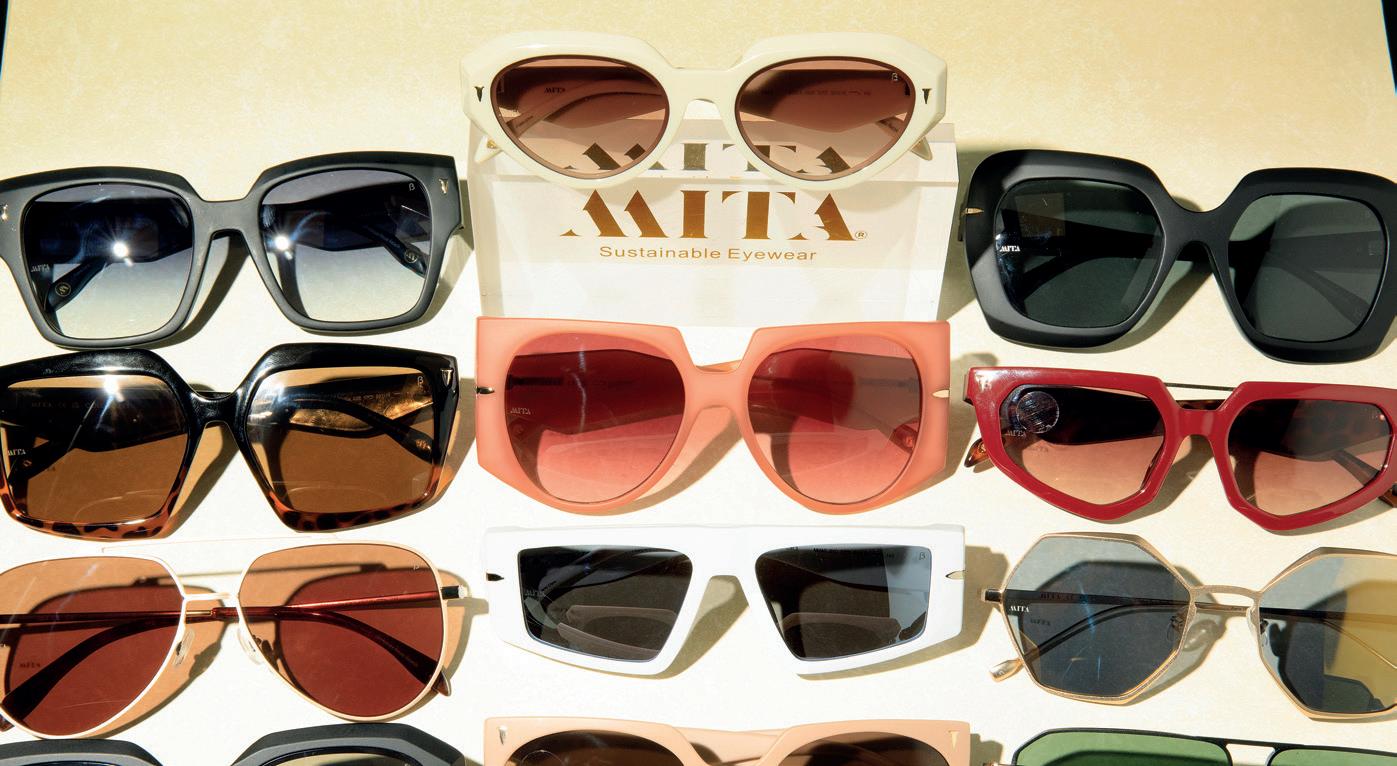
2 minute read
Why sunglasses are so vital for eye health
Sunglasses not only enhance one’s appearance and confidence, but also play a vital role in safeguarding the eyes’ overall well-being
The eyes, like any other part of the body, are delicate and susceptible to disease and injury. Wearing high-quality sunglasses is, therefore, imperative for optimal eye protection. By understanding the harmful effects of UV rays and the significance of sunglasses in eye preservation, one can appreciate their necessity.
Protect your eyes from the elements
Just as the skin needs protection from the sun’s harmful rays, so do the eyes. Exposure to solar radiation can have devastating consequences on the corneas and retinas. Prolonged exposure to unfiltered sunlight, particularly during childhood, can result in eye conditions such as ptergyiums, cataracts and macular degeneration later in life. Rare cases of blindness, and even cancer can occur. While an adult’s lens can absorb UV light to some extent before entering the eye, children’s eyes are especially vulnerable. Up to 90% of UVA and over 50% of UVB rays can reach the retina during the first few years of life. Between 10 and 13 years of age, this reduces to 60% and 25%, respectively. It is only between 18 and 20 years of age that the lens can effectively filter UV rays.
Wearing sunglasses on sunny days is common knowledge, but it is equally crucial to wear them during regular daylight hours, even on cloudy days. Wind can also irritate the eyes, during any season, by drying them out, and causing sand and dust to scratch and further discomfort the eyes.
Which lenses are best for sun protection and glare?
Anti-glare or polarized sunglass lenses are designed to reduce light glare and alleviate eyestrain, thus enhancing vision and safety in bright sunlight. When engaging in outdoor activities, reflected light and glare can be distracting and potentially hazardous. Polarization can help prevent these situations.
Essentially, polarized lenses have a special chemical coating that filters light by lining up its molecules in a specific direction, blocking certain wavelengths from passing through the lens. Think of it like a miniblind that only allows light to pass through its openings. In the case of polarized sunglasses, the filter creates vertical openings that only allow vertically approaching light rays to pass through, while blocking horizontally bouncing light waves off reflective surfaces such as water, or the hood of your car while driving.,
Although polarized lenses can make the image appear a bit darker than usual, they help produce sharper and clearer images with improved details.
Non-polarized prescription sunglasses only reduce light, while dark tinted glasses still allow glare to come through.
While it may be tempting to purchase sunglasses for just fashion or the tint color, be mindful that some of those lenses have no UV protection in them. This can be harmful to your eyes. When shopping for sunglasses, it’s essential to ensure that your lenses provide UV protection. Look for UV protection labels or polarization stickers.

Polarized prescription lenses
If you require prescription lenses, you can still order polarized lenses and they really are worth the extra cost. If you frequently spend time on the water, boating or fishing for example, as well as golf, running, walking and other outdoor activities, investing in polarized lenses can be beneficial and a wise investment for your eye health. These lenses reduce harmful and annoying glare, making objects appear clearer and improve depth perception. Polarized lenses come in several types, so consult Spexx to find which lenses are best suited for you.
Spexx: www.spexxeyecare.com. Tel: 292-5461.










